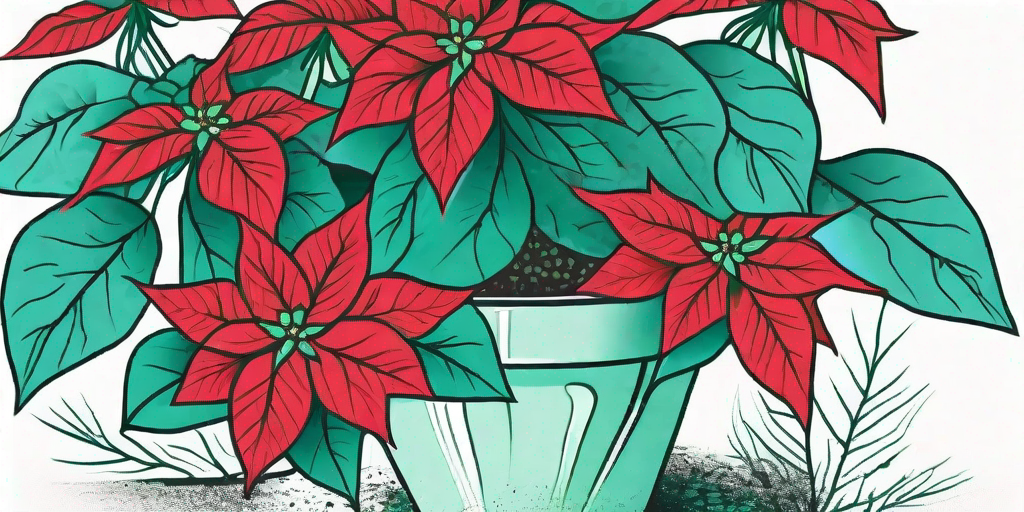
Ah, poinsettias! The vibrant, fiery red plants that are as synonymous with the holiday season as Santa Claus and his reindeer. But did you know that these festive favorites are not just for Christmas? With the right care and attention, you can enjoy their stunning beauty all year round. And the secret to their success? Fertilization, my friend. But fear not, this is not some horticultural dark art. In fact, it's as easy as pie, and we're about to spill the beans.
The Basics of Poinsettia Care
Before we dive into the nitty-gritty of fertilization, let's cover the basics of poinsettia care. After all, you wouldn't try to run before you can walk, would you? Poinsettias are tropical plants, native to Mexico, so they love a warm and humid environment. They also need plenty of light, but not direct sunlight, as this can scorch their delicate leaves.
Watering is another crucial aspect of poinsettia care. These plants don't like to be too wet or too dry, so aim for a Goldilocks-style 'just right' level of moisture. Wait until the top inch of soil is dry before watering, and then soak thoroughly. But remember, poinsettias hate soggy feet, so make sure your plant has good drainage to prevent waterlogging.
Temperature and Humidity
As we've already mentioned, poinsettias are tropical plants, so they love a bit of heat and humidity. Aim to keep your plant in a room with a temperature of around 65-75°F (18-24°C). And if you can, try to provide a bit of extra humidity, especially during the winter months when central heating can dry out the air. A simple way to do this is to place a tray of water near your plant, which will evaporate and increase the humidity in the air.
Light Requirements
Poinsettias love light, but they're a bit like Goldilocks when it comes to sunlight - they don't want it too hot or too cold, but just right. So, place your plant in a bright location, but out of direct sunlight. East or west-facing windows are usually a good bet. And remember, poinsettias need a good long night's sleep (about 14 hours) to produce their vibrant colored bracts, so make sure they're not exposed to artificial light at night.
The Secret to Perfect Fertilization
Now, let's get down to the crux of the matter - fertilization. This is the secret sauce that will take your poinsettias from 'meh' to 'marvelous'. But don't worry, it's not as complicated as it sounds. In fact, with a few simple steps, you'll be on your way to poinsettia perfection.
Firstly, you'll need to choose the right fertilizer. Poinsettias prefer a balanced fertilizer, with equal amounts of nitrogen, phosphorus, and potassium. Look for a fertilizer with a ratio of 20-20-20 or similar. And remember, more is not always better when it comes to fertilizer. Too much can actually harm your plant, so always follow the package instructions.
When to Fertilize
The best time to start fertilizing your poinsettias is in the spring, after they've finished their winter blooming period. Start by fertilizing once a month, and then increase to every two weeks during the growing season (usually from May to September). Once the fall arrives, you can reduce the frequency back down to once a month.
How to Fertilize
Fertilizing your poinsettias is a piece of cake. Simply mix the fertilizer with water according to the package instructions, and then water your plant as usual. But remember, poinsettias don't like to be too wet, so make sure the soil has dried out a bit before you fertilize.
Common Poinsettia Problems and How to Solve Them
Even with the best care and attention, sometimes poinsettias can run into problems. But don't panic! Most issues are easily solved, and we're here to guide you through them.
One common problem is yellowing leaves. This can be caused by a number of factors, including overwatering, poor drainage, or a lack of nutrients. If your poinsettia's leaves are turning yellow, check your watering routine, make sure your plant has good drainage, and consider giving it a dose of fertilizer.
Wilting and Dropping Leaves
If your poinsettia is wilting or dropping leaves, it could be due to a lack of water, too much water, or a sudden change in temperature. Check the soil moisture levels, adjust your watering routine if necessary, and make sure your plant is not exposed to drafts or sudden temperature changes.
Failure to Bloom
If your poinsettia is failing to bloom, it could be due to a lack of light, incorrect temperatures, or insufficient nutrients. Make sure your plant is getting enough light, is kept at the right temperature, and is being fertilized regularly.
Frequently Asked Questions
- How often should I water my poinsettia?
Wait until the top inch of soil is dry before watering your poinsettia, and then soak thoroughly. The frequency will depend on the conditions in your home, but generally, watering once a week is a good starting point. - How much light does my poinsettia need?
Poinsettias need plenty of light, but not direct sunlight. Place your plant in a bright location, but out of direct sunlight. They also need about 14 hours of darkness each day to produce their vibrant colored bracts. - What kind of fertilizer should I use for my poinsettia?
Poinsettias prefer a balanced fertilizer, with equal amounts of nitrogen, phosphorus, and potassium. Look for a fertilizer with a ratio of 20-20-20 or similar. - When should I fertilize my poinsettia?
Start fertilizing your poinsettia in the spring, after it has finished its winter blooming period. Fertilize once a month, increasing to every two weeks during the growing season (usually from May to September).
And there you have it, the secret to growing stunning poinsettias. With a bit of care and attention, and the right fertilization, you'll have a plant that's not just for Christmas, but a joy to behold all year round. Happy gardening!















